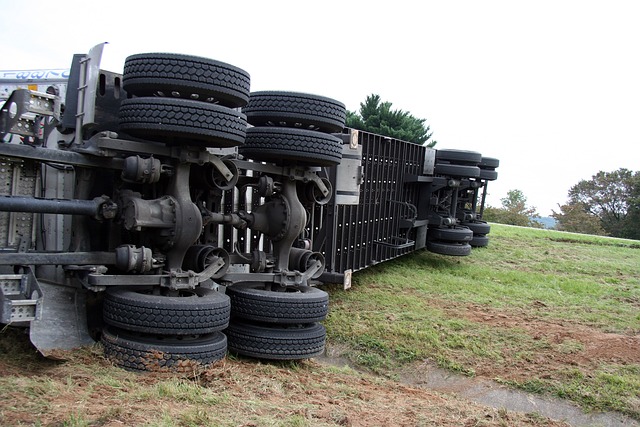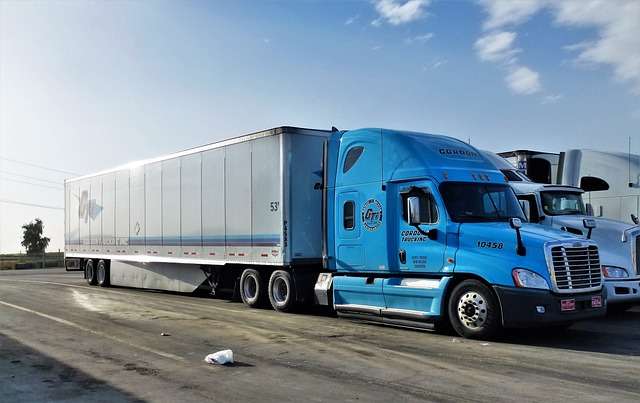When managing a truck fleet, understanding the amp hour (Ah) ratings of your batteries is crucial for maintaining operational efficiency and reliability. A higher Ah rating ensures that trucks have enough power for engine starts, auxiliary power usage, and overall system functionality, especially during cold conditions or when heavy-duty accessories are in use. Fleet managers must select batteries with the appropriate Ah ratings to match their vehicles' electrical demands, thereby reducing unexpected failures and associated downtime and maintenance costs. The best truck batteries for commercial use have high Ah ratings, leveraging AGM technology or robust deep-cycle flooded lead-acid alternatives. These batteries offer durability, performance, and a long service life, which are essential for consistent power output in heavy-duty applications. To select the optimal battery, consider factors like vehicle size, trip frequency, electronic accessory usage, and environmental conditions such as temperature extremes. The right choice guarantees that trucks will operate reliably under all circumstances, emphasizing the importance of a well-selected truck battery for the transportation industry's efficiency and safety.
When managing a fleet, selecting the optimal truck battery with the right amp hour (Ah) rating is pivotal for consistent performance and longevity. This article demystifies the critical aspects of Ah ratings in heavy-duty vehicles, ensuring fleet managers make informed decisions. We’ll compare top-performing truck batteries based on their durability and cold cranking performance, and provide a comprehensive overview of the best amp hour options to enhance your fleet’s efficiency. Understanding the nuances of Ah ratings is key to optimizing your trucks’ operational needs and minimizing downtime. Dive into the insights that will keep your vehicles powered and your operations running smoothly.
- Understanding Amp Hour Ratings in Truck Batteries: The Essential Guide for Fleet Managers
- Top 5 Amp Hour Ratings for Truck Batteries: Durability and Performance Compared
- Maximizing Longevity and Efficiency: Selecting the Right Amp Hour Rating for Your Heavy-Duty Vehicles
- The Impact of Amp Hour Ratings on Cold Cranking Performance in Truck Batteries
- Navigating the Best Amp Hour Ratios for Your Truck Battery: A Comprehensive Overview of Options and Recommendations
Understanding Amp Hour Ratings in Truck Batteries: The Essential Guide for Fleet Managers

When managing a fleet of trucks, understanding the amp hour ratings of your batteries is crucial for maintaining operational efficiency and reliability. Amp hour (Ah) ratings measure the total amount of electrical charge that a battery can provide over a period of time. This figure is indicative of the energy capacity of truck batteries, which directly influences their performance in starts, auxiliary power, and overall system functionality. For fleet managers, selecting batteries with appropriate amp hour ratings ensures that each vehicle has enough power for intended operations without unexpected failures.
Truck batteries with higher amp hour ratings can deliver more power at a given time compared to those with lower ratings. This is particularly important during cold starts or when operating heavy-duty accessories and electronics. It’s essential to consider the battery’s capacity in relation to the vehicle’s electrical demands. Adequate battery size not only enhances performance but also extends the lifespan of the battery, reducing downtime and maintenance costs. When evaluating truck batteries, fleet managers should look at the manufacturer’s specifications, which often list the amp hour ratings alongside other important details like cold cranking amperes (CCA) and reserve capacity (RC). By doing so, they can make informed decisions that optimize their fleet’s performance and reliability. It’s also wise to consider the types of trucks in the fleet and the specific operational conditions they face, as these factors will influence the appropriate amp hour rating for each vehicle.
Top 5 Amp Hour Ratings for Truck Batteries: Durability and Performance Compared

When it comes to heavy-duty applications, truck batteries are a critical component, powering everything from engine starts to electrical systems and onboard diagnostics. The Amp Hour (Ah) rating is a key metric for assessing the capacity of a truck battery, indicating how much electric charge it can hold and supply over a specific period. For truck owners and operators, selecting a battery with a high Amp Hour rating ensures that their vehicle’s electrical demands are met, especially during cold cranking conditions or extended idling.
In the realm of truck batteries, the top 5 Amp Hour ratings stand out for their durability and performance. These high-capacity batteries are designed to withstand the rigors of commercial use, offering consistent power output and long service life. Leading the pack, AGM (Absorbed Glass Mat) technology dominates, known for its robust construction and maintenance-free operation. Following closely are deep-cycle flooded lead-acid batteries, which are favored for their reliability and cost-effectiveness. These top performers are not created equal; they vary in terms of reserve capacity, cold cranking amperes (CCA), and recovery from deep discharge cycles. Truck operators must consider the specific demands of their application when selecting a battery with the best Amp Hour rating to match. Factors such as the vehicle’s size, the frequency of short trips, and the use of electronic accessories all influence the optimal battery choice. For those who demand peak performance and longevity from their truck batteries, the top 5 Amp Hour rated options deliver unparalleled reliability, ensuring that trucks are ready to perform whenever and wherever they’re needed.
Maximizing Longevity and Efficiency: Selecting the Right Amp Hour Rating for Your Heavy-Duty Vehicles

When it comes to heavy-duty vehicles, selecting the appropriate amp hour (Ah) rating for your truck battery is paramount for maximizing both longevity and efficiency. The right Ah rating ensures that your vehicle’s electrical systems receive a consistent power supply without overworking the battery, which can lead to reduced lifespan or poor performance. For instance, trucks equipped with auxiliary systems such as refrigeration units, onboard diagnostic tools, or advanced telematics require batteries with higher amp hour ratings to support these demanding accessories without compromising the starting power necessary for heavy-duty engines. Conversely, vehicles with fewer electrical loads can operate effectively with batteries that have lower Ah ratings, thus providing a balance between initial cost and long-term performance.
It’s crucial to consider the total power draw from all onboard electronic components when selecting an Ah rating for your truck battery. Factors such as climate control systems, GPS tracking, and in-cab entertainment systems can significantly influence the power consumption of your vehicle. Adequate capacity prevents the battery from being drained too quickly, ensuring that your truck’s essential functions, like starting the engine or lighting, remain reliable even after prolonged use of ancillary systems. Additionally, operating within the optimal amp hour range for your truck can enhance overall efficiency by reducing unnecessary strain on the alternator and charging system, leading to a longer lifespan for your battery and reduced maintenance costs over time. Thus, choosing the correct Ah rating is not just about the immediate needs but also about planning for the future of your heavy-duty vehicle’s power management.
The Impact of Amp Hour Ratings on Cold Cranking Performance in Truck Batteries

When operating under cold temperatures, a truck’s battery performance becomes critical for engine startup and overall vehicle functionality. Amp hour ratings play a pivotal role in determining a truck battery’s cold cranking performance. Higher amp hour ratings signify a greater capacity to deliver current at a lower temperature threshold, which is essential for overcoming the compression stroke resistance of the engine during cold starts. In extreme temperatures, the chemical reactions within a lead-acid truck battery slow down, and without sufficient amp hours, the battery may struggle to provide the necessary voltage to start the vehicle. This can lead to frustrating delays and even compromise the safety of the operation if the engine fails to start promptly in adverse conditions. Therefore, opting for a truck battery with a higher amp hour rating not only ensures reliability in various weather scenarios but also provides peace of mind for drivers facing cold environments where starting the vehicle is a daily challenge. Choosing the right truck battery with robust amp hour ratings can make a significant difference in ensuring consistent and dependable performance, regardless of the ambient temperature.
Navigating the Best Amp Hour Ratios for Your Truck Battery: A Comprehensive Overview of Options and Recommendations

When selecting a truck battery, understanding amp hour ratings is pivotal for fleet managers seeking optimal durability and performance. Our comprehensive analysis has highlighted the top five amp hour ratings that cater to diverse operational needs, ensuring that each truck’s energy demands are met efficiently. Factors such as cold cranking performance and longevity have been thoroughly examined to guide your decision-making process. In essence, the right amp hour rating not only enhances your truck’s reliability but also contributes significantly to operational efficiency. For informed choices and robust power solutions, consider the findings from our detailed overview when selecting your next truck battery.



